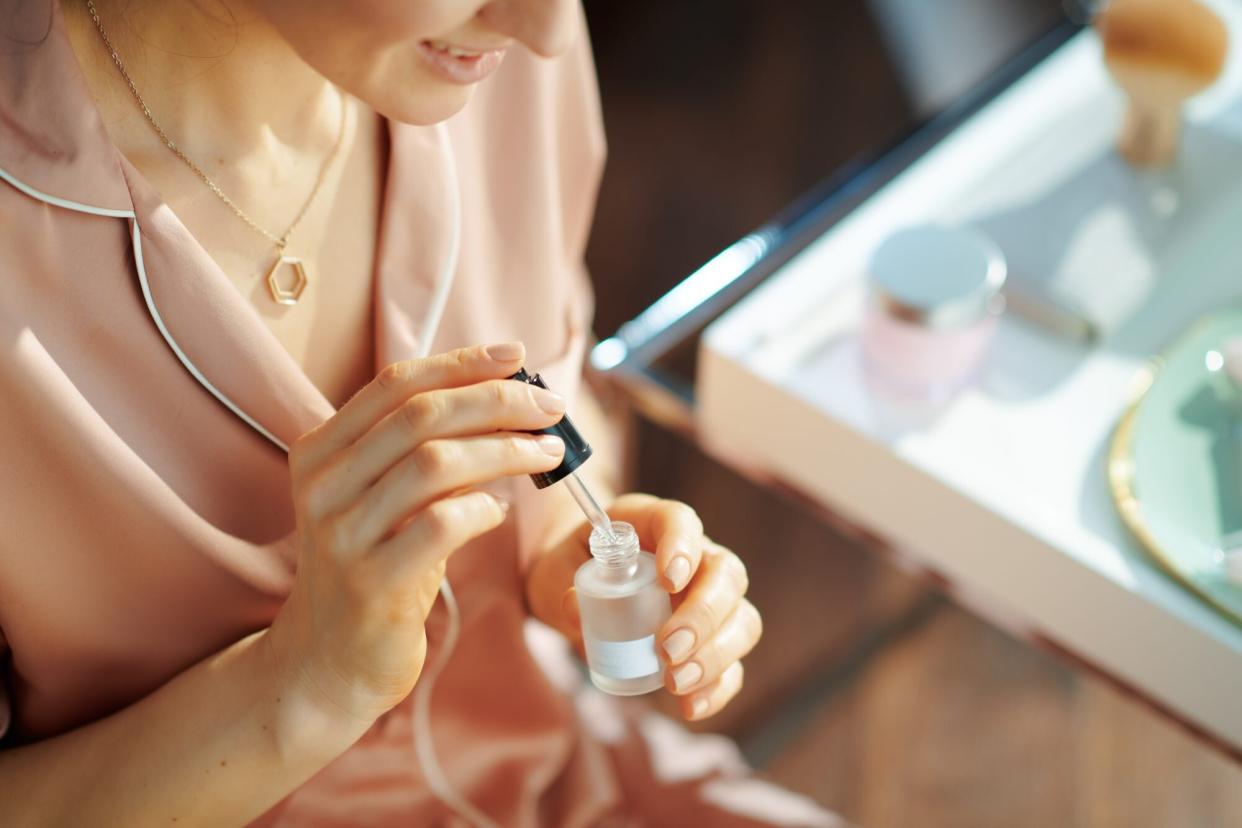If You're New to Retinol, Which Concentration Should You Begin With?

CentralITAlliance / Getty Images
When used correctly, retinol can be extremely effective. It visibly improves a wide range of skin symptoms, from fine lines to sun spots. However, if you don't firmly understand how this ingredient works, you can easily overtax your skin and undermine retinol's benefits. Beginning this active agent with caution, affirms Dr. Loretta Ciraldo, MD FAAD—a Miami-based board-certified dermatologist with over 40 years' experience and the founder of the skin care company, Dr. Loretta—and Dr. Simran Sethi, MD, MBA, the founder of RenewMD Beauty & Wellness and an expert in the aesthetics field, is critical. Ahead, they explain why your starting concentration of retinol—and frequency of application—matters in the short and long term.
Related: Everything You've Ever Wanted to Know About Retinoid
A 0.5-percent concentration is a good baseline.
For beginners, most dermatologists recommend a retinol with a concentration of 0.25 percent to one percent to see results. If your skin is not sensitive, you can usually tolerate something right in the middle; Dr. Sethi starts her patients on a 0.5-percent concentration of retinol, which is suitable for most skin types, she says. Dr. Ciraldo cautions against starting with anything higher; a very concentrated dose is likely to cause side effects.
Those with darker skin tones should never go beyond a 0.5-percent concentration.
For those with melanated skin, in particular, a 0.5-percent retinol strength should be the ceiling—and always pair the active with a lipid-containing moisturizer. "Darker skin tones have more melanocytes (pigment producing cells), and aggressive retinol strengths increase inflammation and dryness, which increases melanocyte and pigment activity," says Dr. Ciraldo. Strengths greater than 0.5 percent can ultimately cause hyperpigmentation in darker skin tones (those with Fitzpatrick Skin Types IV and greater, take caution).
According to Dr. Sethi, though, going beyond 0.5 percent formulations isn't necessary. This dose is generally well tolerated and shows reversal of both photo-aging and fine lines sooner than lower levels in about eight weeks. "In both clinical trials and my personal experience with patients, higher retinol concentrations of more than 0.5 percent have not shown to be more effective and frequently cause inflammation and dryness, causing people to discontinue using retinol entirely," she says.
A prescription product isn't necessary to see results.
As we age, our epidermis thins and our skin becomes drier—which makes prescription retinoids potentially sensitizing for those over 30. According to Dr. Ciraldo, these prescription products aren't necessarily the best options, given the influx of gentler iterations available in the over-the-counter market. "I haven't used prescription retinoic acid (tretinoin) since retinol became available nearly 30 years ago," affirms Dr. Ciraldo. "Tretinoin was developed over 50 years ago as an acne treatment, and I find it works best on young skin."
Retinol—which shouldn't be combined with other exfoliating actives—isn't your only option in this category.
To avoid redness, peeling, and irritation, Dr. Ciraldo warns against combining retinol with other exfoliating actives, like AHA, BHA, glycolic, salicylic, and L-ascorbic acids—and never use retinol on skin that is already red, irritated, or peeling. "If your skin is generally dry and flaky, I recommend using retinoic esther, a gentler form of retinoid," she notes. The Dr. Loretta Concentrated Firming Moisturizer ($70, nordstrom.com) boasts this less-intense ingredient, plus glycerin and jojoba and castor oils, in a vegan formulation; it soothes skin while providing significant anti-aging benefits.
Stick to a cautious application schedule.
Introducing retinol into your routine in a gradual manner makes it more tolerable, which allows you to reap its benefits long-term. "Start by using it twice per week at night for a month, then three times a week for the next month, then every other night, and finally every night after that," says Dr. Sethi, noting that wearing sunscreen every morning is also mandatory (SPF will boost retinol's results and prevent sensitivity due to sun damage). In the first three months of use, the active, which should be applied in a pea-sized amount before moisturizer, will start erasing signs of damage in the skin's more superficial epidermal layer. At this point, adds Dr. Sethi, "the skin's dermal layer will begin showing increased collagen production, which will strengthen and tighten the skin, making it more resilient."

